
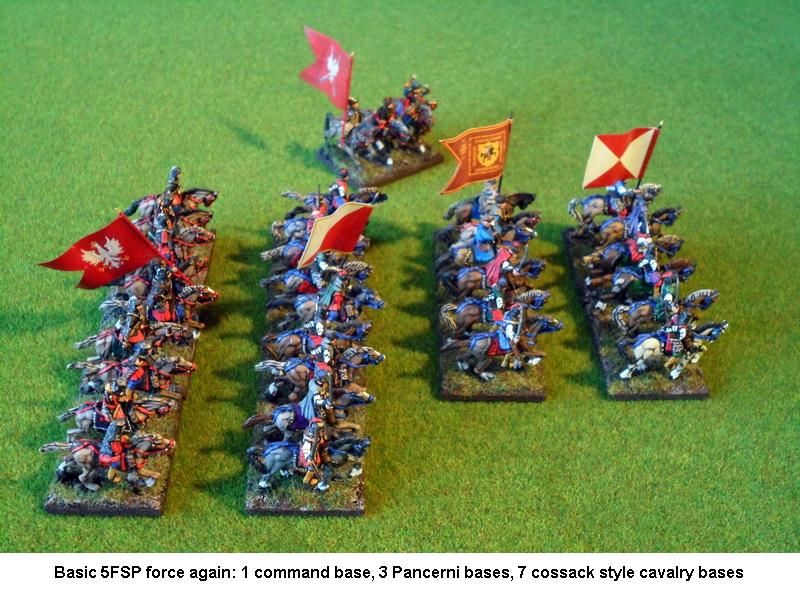
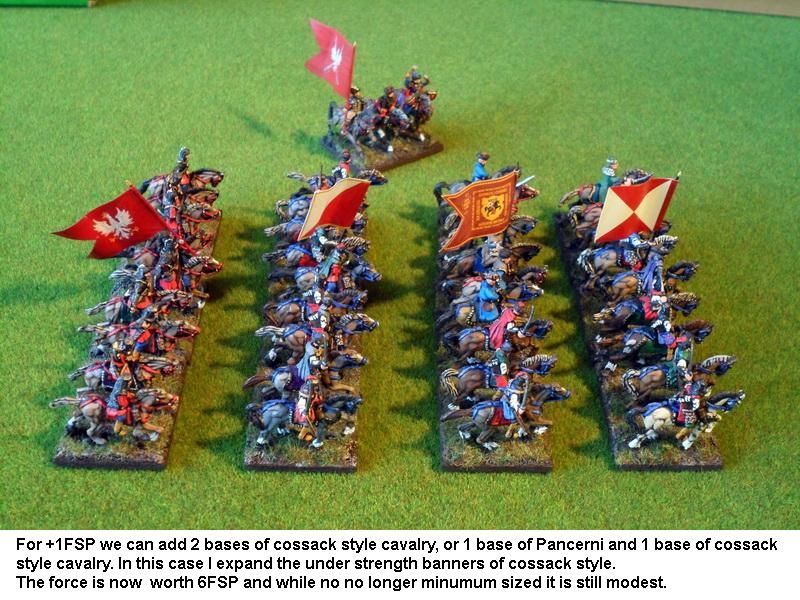
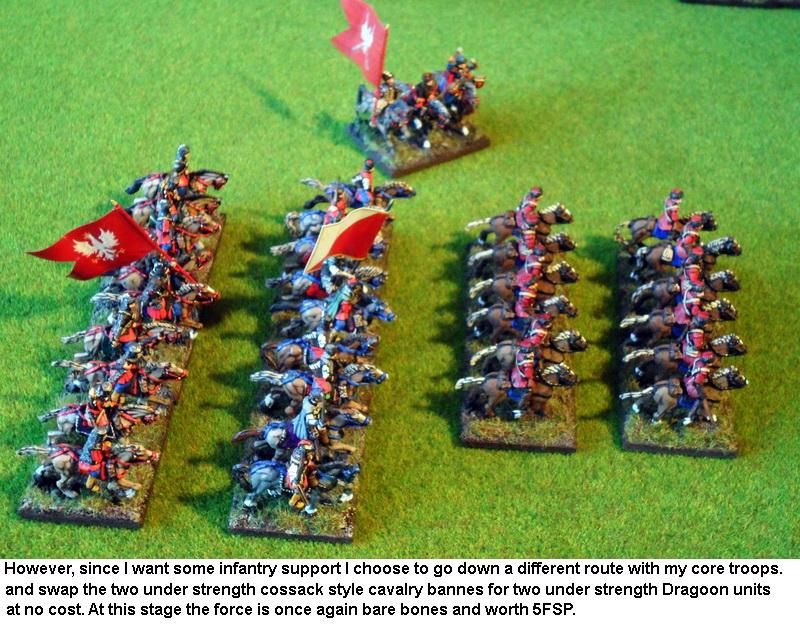 As Wargamer.pl is probably going to cover list construction for the skirmish forces in detail over the next couple of days so I will focus on the Polish-Lithuanian commonwealth since I can actually show the amount of models needed from my own collection.
As Wargamer.pl is probably going to cover list construction for the skirmish forces in detail over the next couple of days so I will focus on the Polish-Lithuanian commonwealth since I can actually show the amount of models needed from my own collection.Most nations in the book have 2 Skirmish forces, the Polish-Lithuanian commonwealth is actually divided between the Polish Crown and Lithuania both on the Skirmish level and the Division level, as each part of the commonwealth fielded slightly different variations of troops, and some units were not present in armies of one or the other part of the commonwealth.
With that said, my example will be based around the Polish skirmish force 1650-66. This force covers many of the early campaigns such as the ones against invading Swedish troops. Many regiments in the rulebook do come in two variants that offer an "early" and "late" part of the Polish times of troubles. Regiments and Skirmish forces may have include some units in the early years that were not present later and vice versa, some regiments may have had more support in later
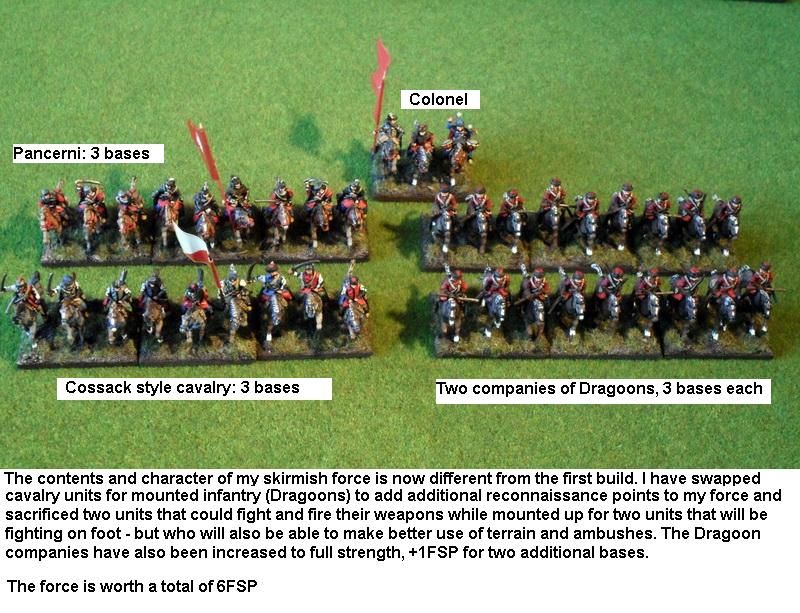 parts of the timeframe and so on.
parts of the timeframe and so on. 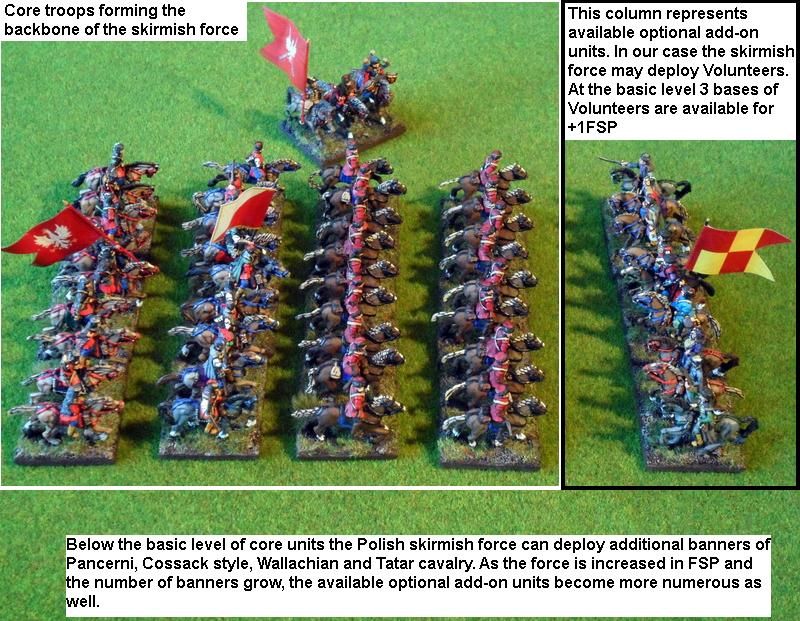
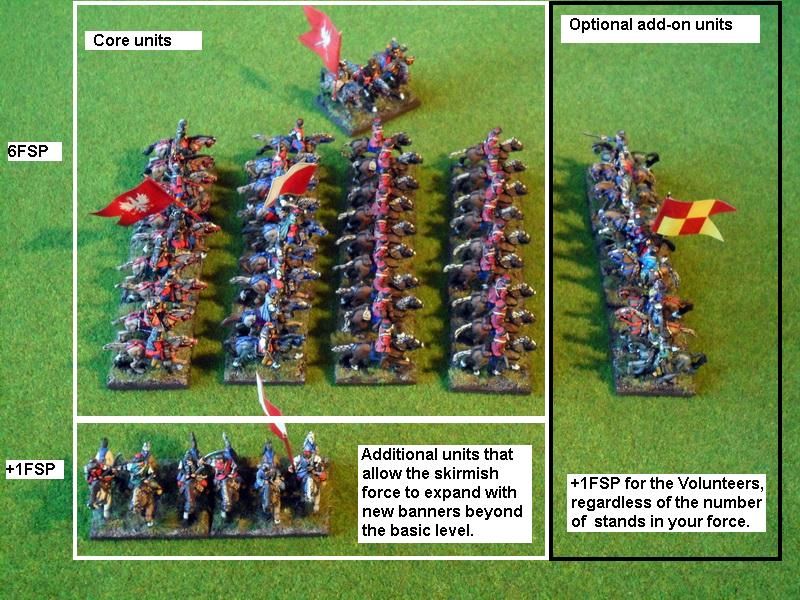 This is not to say that the book is divided into a strict "Early/Mid/Late" war mindset of such games like Flames of War. I do believe however that offering different versions of regiments was necessary since there were developments of the organization of troops - especially within the Polish-Lithuanian commonwealth during its many wars. And while the difference between these variants are often quite minor, they may still be important enough for people who want to play battles that are strictly limited to the Swedish invasion of Poland to name one example.
This is not to say that the book is divided into a strict "Early/Mid/Late" war mindset of such games like Flames of War. I do believe however that offering different versions of regiments was necessary since there were developments of the organization of troops - especially within the Polish-Lithuanian commonwealth during its many wars. And while the difference between these variants are often quite minor, they may still be important enough for people who want to play battles that are strictly limited to the Swedish invasion of Poland to name one example.But I digress, back to the Skirmish lists, I picked the early Polish list and you will be able to read most of the useful information in the pictures this time around but I will try to expand upon that with additional information.
First of all you have to imagine skirmish forces and regiments in By Fire & Sword as a "Tech tree" design. What that means is that you need to fulfill certain requirements before you are allowed to move beyond the next step. Once your skirmish force or regiment reach a certain size you are allowed to make choices that can be about adding optional add-on troops that are gradually unlocked, adding additional units to expand your skirmish force and adding additional commanders which become available when the size of your force reach a certain amount of companies.
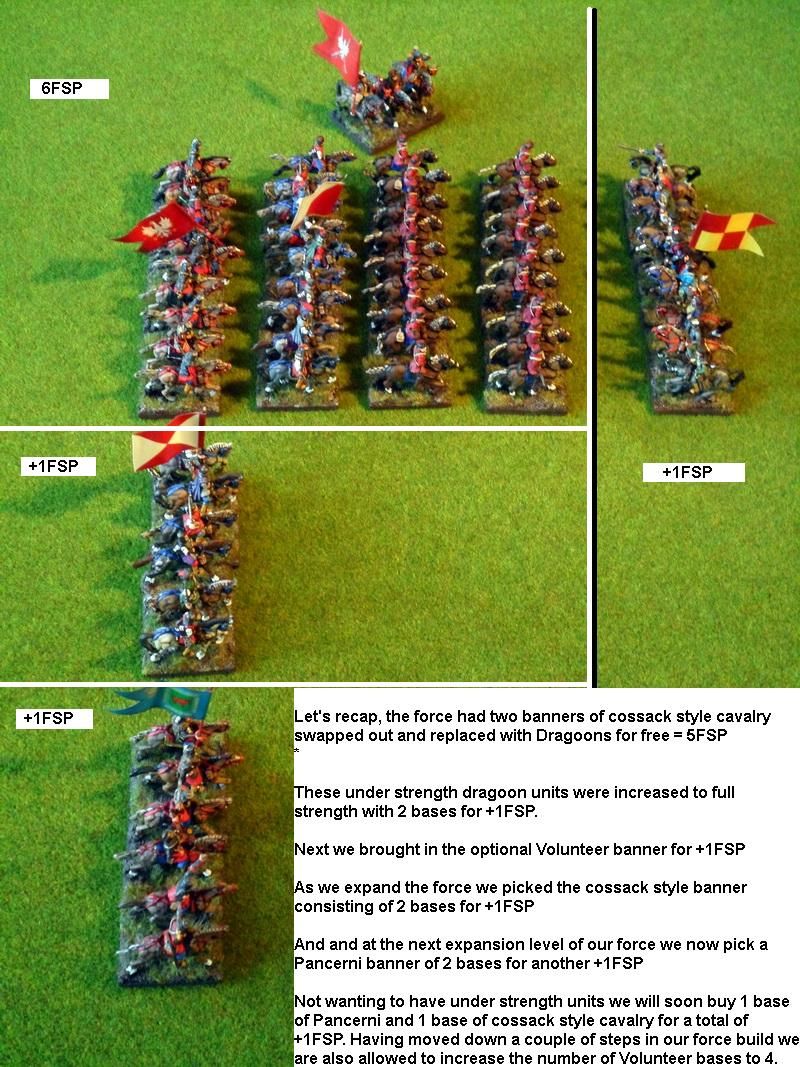 This is the force which I used during my demo with Andreas this weekend:
This is the force which I used during my demo with Andreas this weekend: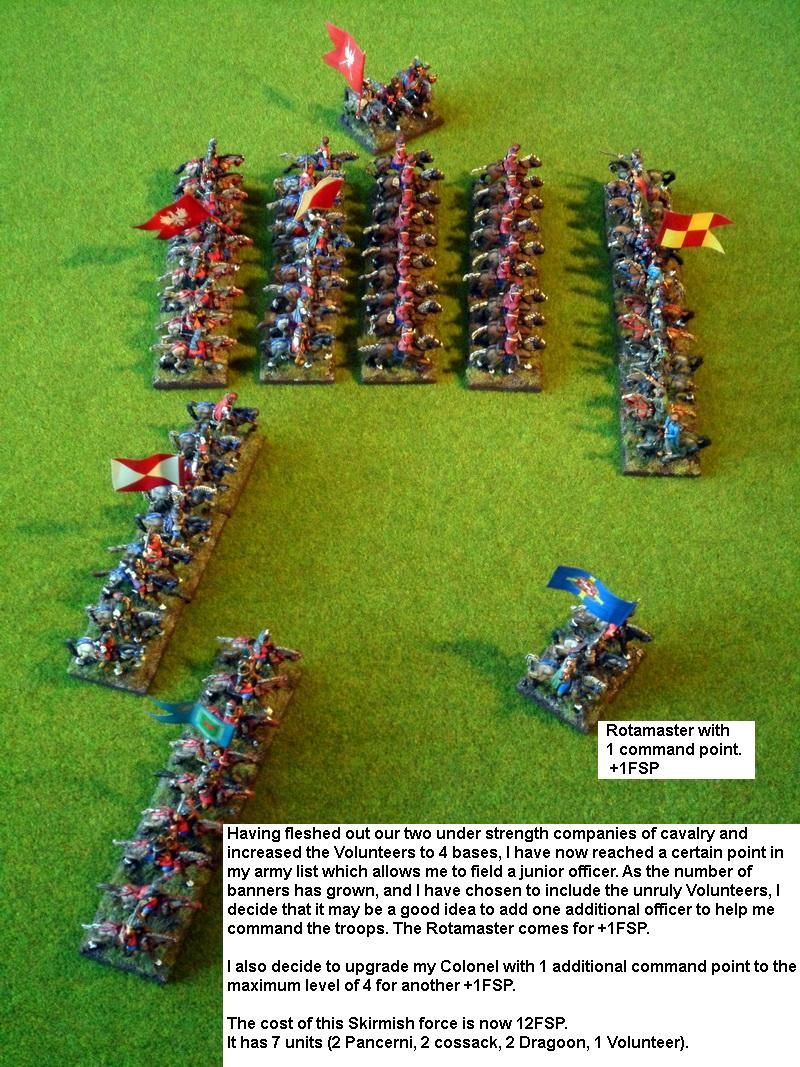 Colonel with 4 command points
Colonel with 4 command points2 banners of cossack style cavalry (6 bases)
2 banners of Pancerni cavalry (6 bases)
2 companies of Dragoons (6 bases)
1 banner of Volunteers (4 bases)
1 Rotamaster junior commander with 1 command point
This force was worth 12 Force Strength Points (FSP) in total, and was at roughly at 75% strength if you look in the rulebook at how many banners/companies you can include in a Polish Skirmish force. There were quite a few choices for me to pick from, I could have fielded Tatar and Wallachian banners, skipped the Dragoons, decreased the number of Pancerni and fielded Elite units of cossack style banners instead etc.
The core and absolute minimum of a Polish skirmish force is 1 Colonel, 1 banner of 3 bases Pancerni, 1 banner of 3 bases cossack style cavalry, and 2 under strength banners of cossack style cavalry. This force comes at 5FSP.
Bringing under strength units up to full strength and adding additional and optional units, additional commanders and increasing the command points available to my Colonel expanded the force to 12FSP.
The pictures show exactly how.
And really, this is how most skirmish forces and regiments are built in the game. Some regiments are very one-key like the Muscovite Streltsy regiment which is only made up of Streltsy bases, other regiments allow for a wide diversity such as the Levy of the Nobility regiments in the Polish-Lithuanian armies, Cossack Pulk of the Cossack armies or Provinicial force from the Anatolian regions in the Ottoman army. But most of the regiments and skirmish forces allow the player to swap things around, buy various additional units and unlock optional add-on units.
It's a very good system that serves to limit cheesy power gaming and enforce historical accuracy of regiments, skirmish forces and armies. You are limited to field historical numbers of companies within a regiment and cannot field the "good stuff" such as Polish Winged Hussars in ahistorical combinations or without any support from regular cavalry units.
No comments:
Post a Comment